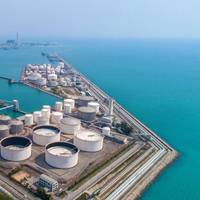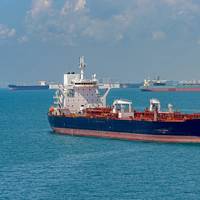Shell to Shut Down Philippine Refinery and Turn It into Import Terminal

The Philippine unit of Royal Dutch Shell said on Tuesday it will permanently shut one of the country's two oil refineries, blaming a pandemic-led slump in margins, with other regional closures likely to follow, according to analysts.Pilipinas Shell Petroleum Corp said its 110,000-barrel-per-day Tabangao facility in Batangas province, which began operations in 1962, was no longer economically viable and would be turned into an import terminal.Singapore's complex refining margin…
Tankers Unable to Offload in Malaysian Port

Refineries at Port Dickson on Peninsular Malaysia's west coast are unable to receive crude oil after a port facility that carries crude from the ships to the plants broke down.A system known as a single point mooring (SPM) unit, a loading buoy anchored offshore that allows tankers to offload their crude via pipeline to the refineries, has been out of service, the refinery operators said.The SPM connects to a refinery operated by Hengyuan Refining Company Bhd (HRC), a subsidiary of China's Shandong Hengyuan Petrochemical Co…
Gulf Tanker Rates Fall
Crude tanker rates from the Arabian Gulf to Asia on 2mn-barrel tankers fell to its lowest in more than six weeks as the ships available at the end of August outnumber cargoes, according to a Bloomberg report. In less than a month freight rates for VLCCs reportedly have dropped 40 percent as charterers held back from hiring vessels, allowing a surplus to build up. GS Caltex Corp, South Korea’s second-largest oil refiner, booked a VLCC, Hebei Mountain to load crude on August 23 at WS 62.5, as measured in Worldscale points, shipbrokers including Oslo-based PF Bassoe said in notes to clients. GS Caltex’s rate is 5.5 points, or 8 percent, down from yesterday on the benchmark route to Japan, Bloomberg data show. Transport costs on the route are $1.10 a barrel compared with $1.20.
President Arroyo Urge Sea Lanes for Tankers
President Arroyo has ordered the Philippine Coast Guard (PCG) to identify "dedicated sea lanes" for tankers carrying oil and other hazardous chemicals to keep them away from "ecologically sensitive areas" and areas providing tourism and other livelihood opportunities, Manila Bulletin reported. Arroyo issued the directive in her second National Disaster Coordinating Council (NDCC) meeting on August 28 in Guimaras where she monitored the ongoing efforts to clean up and rehabilitate areas polluted by spilt oil from the sunken MT Solar I tanker. She will return to Guimaras on September 6 to convene another NDCC meeting during which the PCG will present its proposed dedicated sea lanes for tankers carrying oil and other chemicals.
DoTC Forms Team to Conduct Probe on Oil Spill
On recommendations of Philippine Coast Guard (PCG) commandant Vice Admiral Arthur N. Gosingan, Transportation and Communications Secretary Leandro P. Mendoza formed yesterday a national board of marine inquiry (BMI) to conduct a thorough fact-finding investigation on the oil spill off Guimaras Island in Western Visayas — so far the biggest ever reported environmental disaster in the country. In a press conference held at the PCG headquarters in Port Area, Manila, Gosingan said the creation of the national BMI elevated from a special board of marine inquiry (SBMI) the status of the probe body. Mendoza named Coast Guard deputy commandant Rear Admiral Danilo A. Abinoja as the national BMI chairman.
Petron to Bring in Gear to Locate Tanker
Petron Corp. is negotiating with a Singaporean company to bring in advanced technology that would determine the exact location of the oil tanker that sank off Guimaras island and siphon off the remaining bunker oil still in the vessel. Lori Tan of the World Wide Fund said Petron, which chartered the ill-fated M/T Solar I, will bring in deep-sea contractors who will use a side scan zoner to determine the wreck’s actual location on the seabed, a remotely piloted submersible to find the leak, and hot tap to siphon the oil that is still contained in the tanker’s hold. Environment Secretary Angelo Reyes and Tan believe the cleanup might take two years if all the needed technology and assistance arrive soon.





